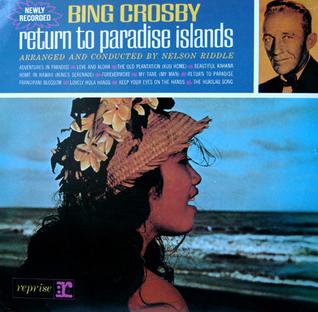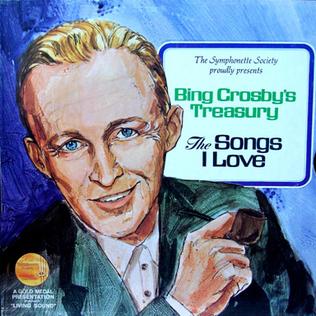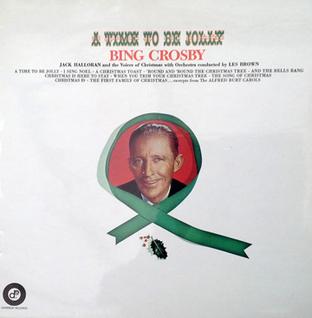
Harry "Sweets" Edison was an American jazz trumpeter and a member of the Count Basie Orchestra. His most important contribution was as a Hollywood studio musician, whose muted trumpet can be heard backing singers, most notably Frank Sinatra.

Samuel Louis Nistico, better known as Sammy Nestico, was an American composer and arranger. Nestico is best known for his arrangements for the Count Basie orchestra.

The Count Basie Orchestra is a 16- to 18-piece big band, one of the most prominent jazz performing groups of the swing era, founded by Count Basie in 1935 and recording regularly from 1936. Despite a brief disbandment at the beginning of the 1950s, the band survived long past the big band era itself and the death of Basie in 1984. It continues under the direction of trumpeter Scotty Barnhart.

Jazz at Santa Monica '72 is a 1972 live album by the American jazz singer Ella Fitzgerald, recorded at the Santa Monica Civic Auditorium accompanied by a jazz trio led by the pianist Tommy Flanagan, and the Count Basie Orchestra.

Bing Sings Whilst Bregman Swings was Bing Crosby's sixth LP, his first album for Verve, recorded and released in a mono format in 1956.
Orchestral jazz or symphonic jazz is a form of jazz that developed in New York City in the 1920s. Early innovators of the genre, such as Fletcher Henderson and Duke Ellington, include some of the most highly regarded musicians, composers, and arrangers in all of jazz history. The fusion of jazz's rhythmic and instrumental characteristics with the scale and structure of an orchestra, made orchestral jazz distinct from the musical genres that preceded its emergence. Its development contributed both to the popularization of jazz, as well as the critical legitimization of jazz as an art form.

"I Surrender Dear" is a song composed by Harry Barris with lyrics by Gordon Clifford, first performed by Gus Arnheim and His Cocoanut Grove Orchestra with Bing Crosby in 1931, which became his first solo hit. This is the song that caught the attention of William Paley, president of CBS, who signed him for $600 a week in the fall of 1931.
Singer Rosemary Clooney is known for many songs, including "Come On-a My House", "Botch-a-Me", "Mambo Italiano", "Tenderly", "Half as Much", "Hey There" and "This Ole House". This is a partial discography.
This is a list of Bing Crosby songs he recorded twice or more during his career, excluding all of the 1954 re-recordings for Bing: A Musical Autobiography.

Join Bing & Sing Along is a long-playing vinyl album issued first by RCA Victor (LPM/LSP-2276) and immediately thereafter by Warner Bros. Records (W/WS-1363) in 1960. The album consists of twelve medleys of 33 old songs in a singalong format. Bing Crosby sings on all of the tracks except those marked with an asterisk. The chorus and orchestra is conducted by Jack Halloran and their tracks were pre-recorded on November 9 & 13, 1959 with Crosby over-dubbing his vocals. Orchestral arrangements were by Bob Thompson.

Holiday in Europe was a long-playing vinyl album recorded for Bing Crosby's own company, Project Records at Radio Recorders in Hollywood and issued by Decca Records (DL-4281) in 1962. The album consists of twelve European songs. The orchestral arrangements were by Bob Thompson and the orchestra was conducted by Malcolm Lockyer at Decca's West Hampstead, London studios in October 1960. Crosby had recorded four of the songs with Lockyer on October 15, 1960, in London but a decision was taken not to use these vocal tracks. Crosby subsequently over-dubbed his vocals on all of the orchestral tracks in May 1961. Malcolm Lockyer does not receive a credit on the album cover.

Anything Goes is a soundtrack album issued by Decca Records from the film of the same name. The film starred Bing Crosby, Donald O'Connor, Jeanmaire, and Mitzi Gaynor. Joseph J. Lilley was the musical director with special orchestral arrangements by Van Cleave. All the songs were written by Cole Porter with the exception of three additional songs from Jimmy Van Heusen (music) and Sammy Cahn (lyrics) which have been annotated in the listing below. The soundtrack recording took place between April and June 1955. Three songs were recorded in February 1956 with Joseph J. Lilley and his Orchestra for inclusion in the album to replace the original soundtrack versions.

Return to Paradise Islands is a long-playing vinyl album of Hawaiian themed songs recorded by Bing Crosby for Reprise Records (R-6106) at three separate sessions in 1963. The tracks were arranged by Nelson Riddle who also conducted the orchestra.

Bing Crosby's Treasury – The Songs I Love is an LP set recorded in 1965 and issued by a mail-order firm, The Longines Symphonette Society, an educational service of the Longines-Wittnauer Watch Company.

Bing Crosby's Treasury - The Songs I Love is an LP set issued in both mono and stereo formats by a mail-order firm, The Longines Symphonette Society, an educational service of the Longines-Wittnauer Watch Company. A similar LP set had been issued in 1966, see Bing Crosby's Treasury - The Songs I Love, and this updated version had a total of thirty-six Bing Crosby vocals.

A Time to Be Jolly is a long-playing vinyl album recorded by Bing Crosby for RCA imprint Daybreak Records at Mercury Sound Studio West on Mission Street, San Francisco. Crosby was supported by Jack Halloran and the Voices of Christmas with the orchestra conducted by Les Brown.

That’s What Life Is All About is a 1975 vinyl album recorded by Bing Crosby for United Artists at Chappells in London in February 1975. He was accompanied by Pete Moore and his Orchestra.

Feels Good, Feels Right is a 1976 vinyl album recorded by Bing Crosby for Decca Records during four morning sessions in 1976 at Decca Studio No.3, Broadhurst Gardens, London. He was accompanied by Alan Cohen and his Orchestra. Cohen also did all the orchestral arrangements.

Goldilocks is a 12" soundtrack vinyl album taken from the live-action/animated De-Patie-Freleng TV film Goldilocks shown on NBC on March 31, 1970. It was first released in 1970 as DL-3511 by Disneyland Records for a special promotion of Evans-Black Carpets by Armstrong. The album could be purchased for $2.25. When the promotion period had expired, the album was re-released by Disneyland Records as ST-3889 with an accompanying 12-page storybook. The recording is particularly important to the Bing Crosby career as he recorded commercial tracks in every year from 1926 to 1977 and this album represents his only recording work for 1969.

Bing Crosby Entertains was a weekly radio show which ran for two seasons during 1933–1935, and was to cement Bing Crosby's reputation as a radio star. Bing Crosby Entertains was Crosby's most important radio series to date, and it enabled him to fully develop as a rounded radio personality instead of a singer who did not speak.

















